The Prasat Preah Khan stands as a magnificent example of the temples of Siem Reap, Cambodia, not far from the famed Angkor Wat temple, within the boundaries of the Angkor Archaeological Park. It is maintained by the World Monuments Fund. The temple is a grand example of Khmer architecture and one of the largest temples built by the Khmer King Jayavarman VII. One of the must-visit temples in Siem Reap, Preah Khan is sure to leave you in awe with its massive proportions and scale of architecture. Read on to know more about the history of Preah Khan, the architecture and design of Preah Khan, and much more in our Preah Khan travel blog post.
Preah Khan is one of the most important temples of Siem Reap after Angkor Wat. This is a complete guide to Preah Khan covering its history and architecture.
Table of Contents
Preah Khan – A Guide to Preah Khan Temple, Cambodia
“This is the place where the king used to receive visitors arriving by boat”, said our guide Sovithyea Hok, pointing towards a wooden platform that stood on the edge of the Jayatataka Barray. Three boats stood moored on the banks. We could almost imagine the king standing in regal splendour with arms outstretched to welcome his guests.
Our guide had thought it appropriate to lead us into the temple from the eastern entrance, which was originally the main entrance rather than the official western entrance. This helped us to get a better orientation of what the temple complex must have been in its heyday.
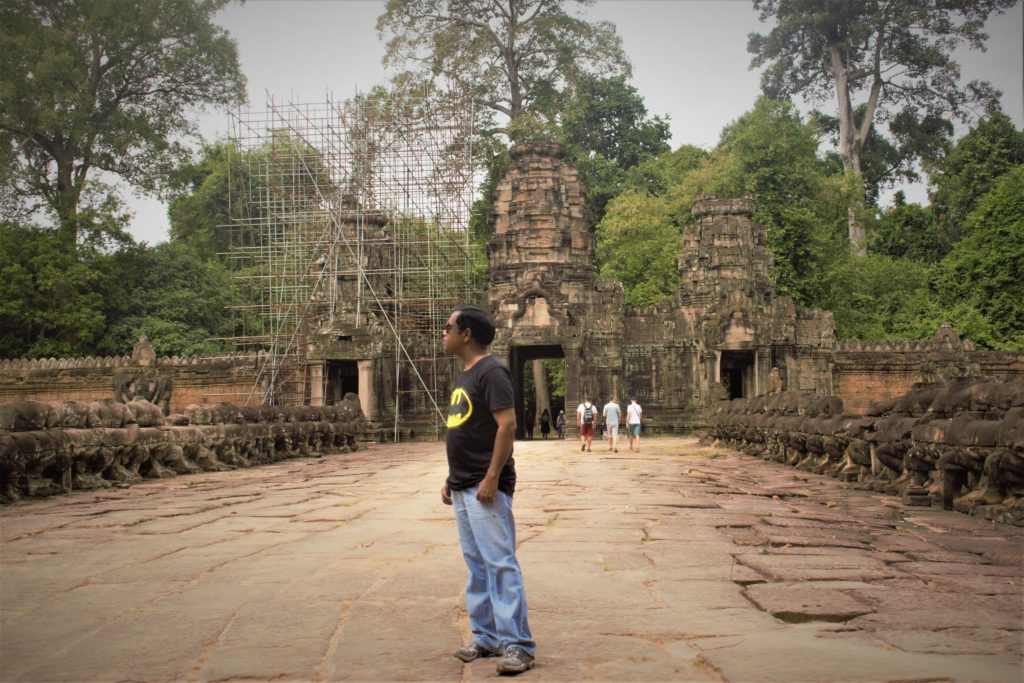
The cool wind blowing across the waters of the Jayataka Barray caressed our faces, as we turned to walk towards the eastern entrance of the Preah Khan temple Cambodia. The temple is a magnificent and massive tribute to a father by his son in the 12th century. Though most of the temple is in ruins today, one can still grasp the original grandeur of the temple by what remains standing today. Come and join us as we explore the wonders of this Siem Reap temple, its history, and architecture in this complete guide to the Preah Khan Temple.
Preah Khan Temple History
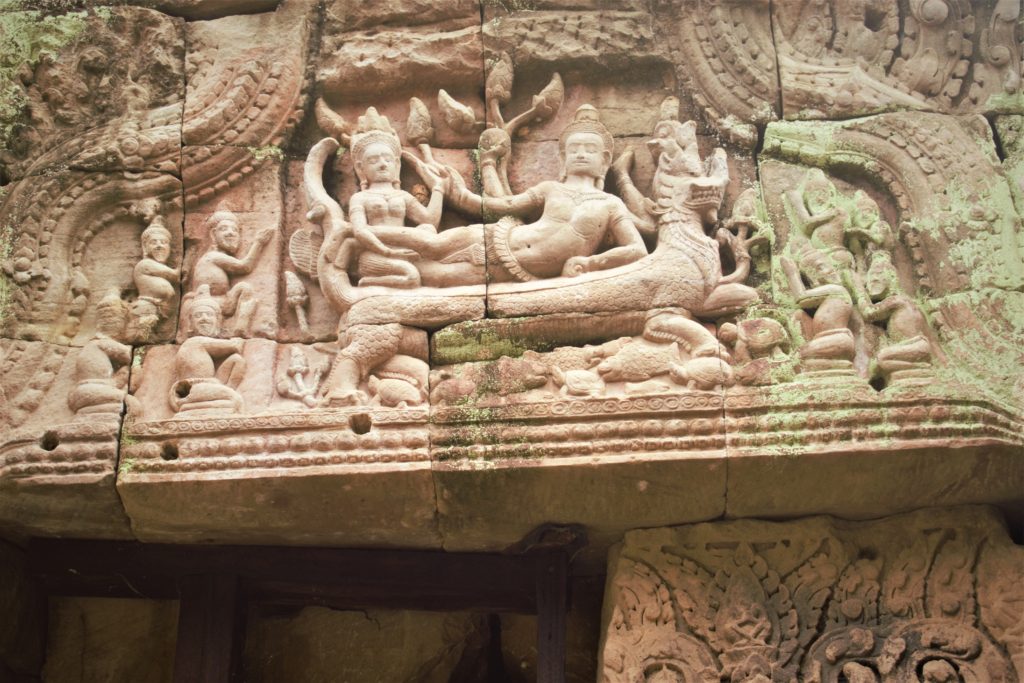
The Preah Khan temple marks the culmination of the building spree that Jayavarman VII, the most famous of the Khmer kings undertook during his reign. The temple he built was ostensibly an ode to his father Dharanindravarman, but it was much more than that. He had already built the Ta Prohm temple now popular as the Tomb Raider temple as a dedication to his mother Jayarajacudamani in 1186 AD, and immediately after that, he dedicated the Preah Khan temple to his father in 1191 AD.
The temple’s name Preah Khan translates as “Sacred Name”, is probably a later form of identification. The original name of the temple complex is believed to have been, “Nagara Jayasri”, which means, “City of Sacred Victory”. It was named so as it stood on the very battlefield where King Jayavarman VII defeated the Chams and drove them out of the Angkor kingdom. The Chams were from a region known as Champa, which is present-day Central and Southern Vietnam.
It is believed that the Preah Khan temple complex came up as a replacement for the palaces of Jayavarman VII’s predecessors kings Yasovarman II and Tribhuvanadityavarman.
The importance of the Prasat Preah Khan lies in the fact that it was conceived and built as a major centre of religion and culture. Its construction marks the zenith of the brilliance of Jayavarman VII’s construction activities in terms of architecture and engineering.
An idea of the cultural and religious significance of the temple can be had from the fact that there were more than 500 different deities installed in the temple. The principal deity that stood in the centre of the sprawling temple complex was Lokesvara or Avalokitesvara, a representation of the king’s own father.
A stele found at the temple site near the eastern gate records the dedication and has been a source of valuable information. It is now known that apart from Buddhist deities, the temple had chapels dedicated to Vaishnavite and Shaivite deities as well as to the forefathers and ancestors of King Jayavarman VII. The Stele also informs that the temple complex was a place of learning and even specifies the number of students and teaching faculty that lived in the complex. Unfortunately, the numbers are not visible. However, it is believed that the temple complex was a massive enclosed city that sheltered within its fold, temples, living quarters, and a Buddhist university. Though some accounts say that more than 100,000 people lived inside the temple complex, a more realistic estimate is that of about 15,000 residents.
The Architecture of Preah Khan Temple
What you immediately notice on entering the Preah Khan temple complex is that its design incorporates a more or less flat structure, a linear orientation, as opposed to say, the Angkor Wat temple. Its architecture is similar to that of the Ta Prohm temple and is classified in the category of the Bayon style of architecture.
The Preah Khan temple design corresponds to that of a city or a small township or monastery. It is a complex that is enclosed with perimeter walls with access through entrance gates placed at the cardinal points. It consists of four concentric enclosures. The inner two enclosures are linked at several points by galleries. The other two enclosures, namely the third and the fourth that form the outer walls are separated from the inner portion with sprawling spaces. It is believed that these spaces too had various structures that have disappeared today, it is conjectured that these may have been of wood because of which there is no trace of them.
Visiting The Preah Khan Temple Siem Reap
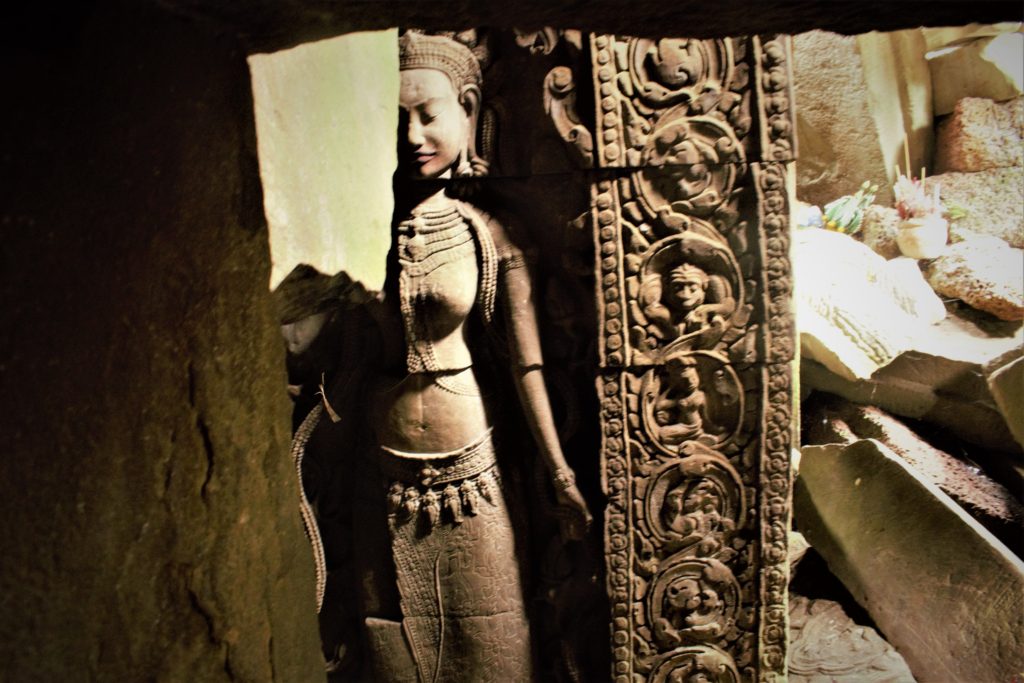
The Preah Khan temple complex is built on an east-west axis. It is surrounded by a moat which is about 40 meters in width and can be crossed by a causeway that is paved with stone slabs and built with sandstone and laterite. Similiar causeways provide access to the temple at the four cardinal points. The causeways lead to the Gopura or entrance towers that provide entry into the temple complex. The Gopura consists of one main gate flanked by two smaller gates.
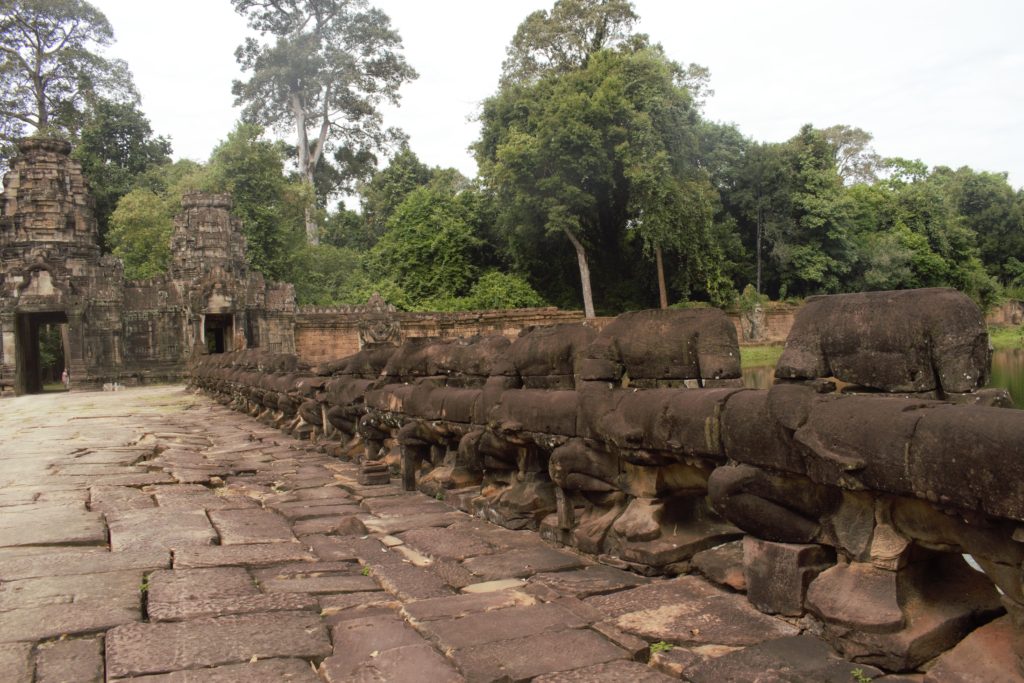
On either side of the causeway is a balustrade that depicts the scene of the “churning of the ocean”, from Hindu mythology. On one side of the causeway can be seen the Devas or the Gods holding one end of a serpent which is a naga known as Vasuki according to Hindu mythology. The other side of the causeway has a balustrade where the Asuras or demons can be seen holding on to another end of the serpent. Sadly the heads of most of the sculpted Devas and Asuras are missing on the eastern entrance gate.
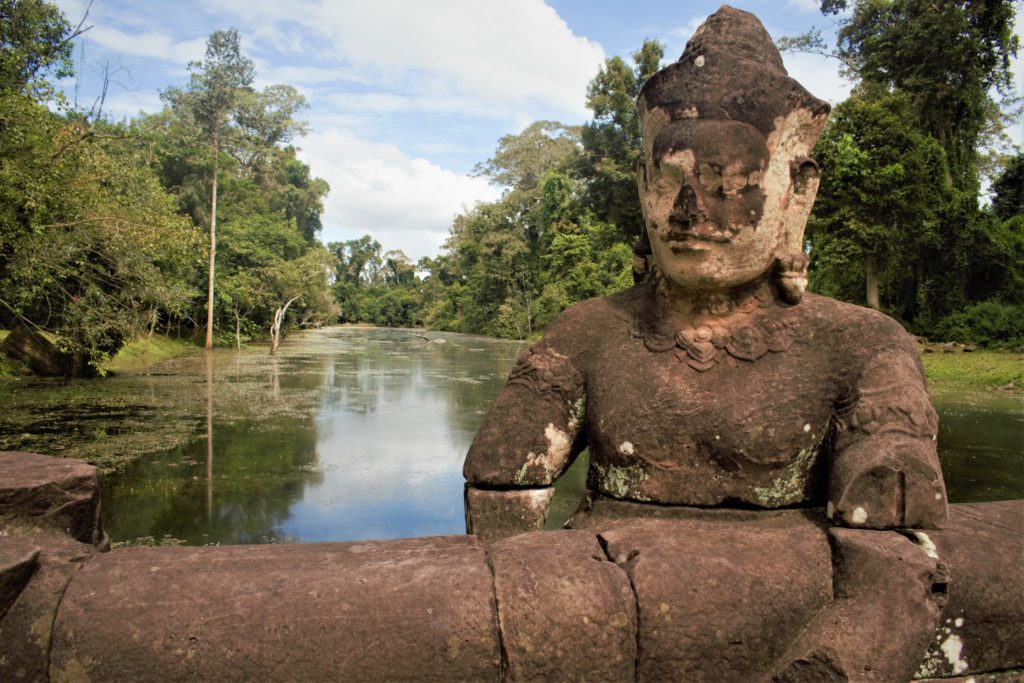
However, on the Western gate, there are a few well-preserved sculptures that grace the balustrade and provide a visually pleasing sight against the green waters of the moat.
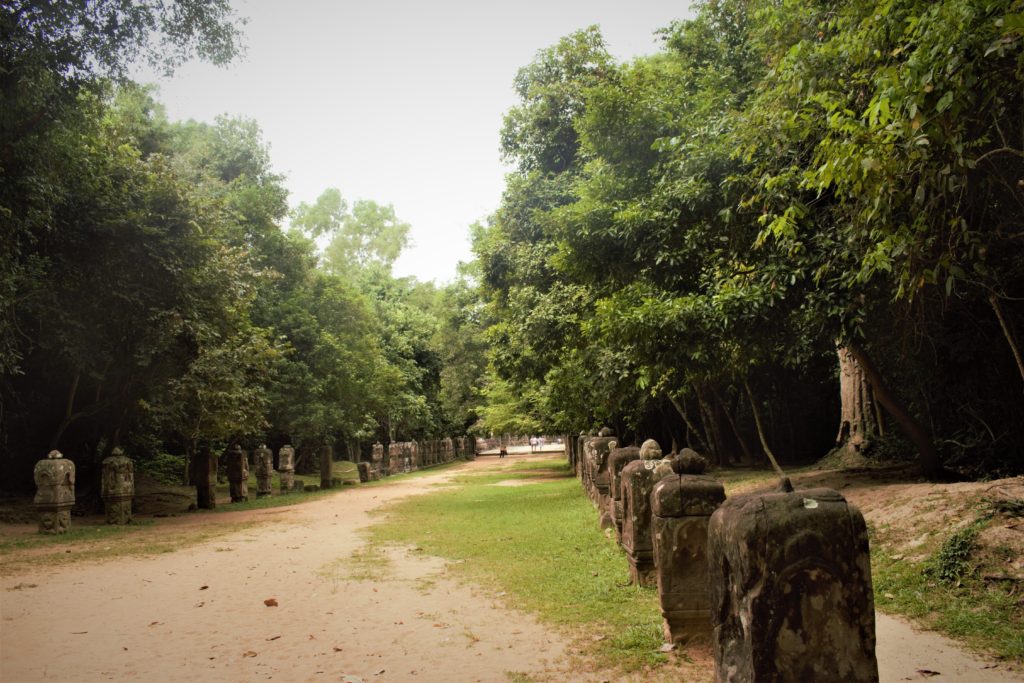
On the eastern and western entrances, the paths that lead to the causeway is flanked by the remains of stone pillars that could have housed lanterns to light up the way.
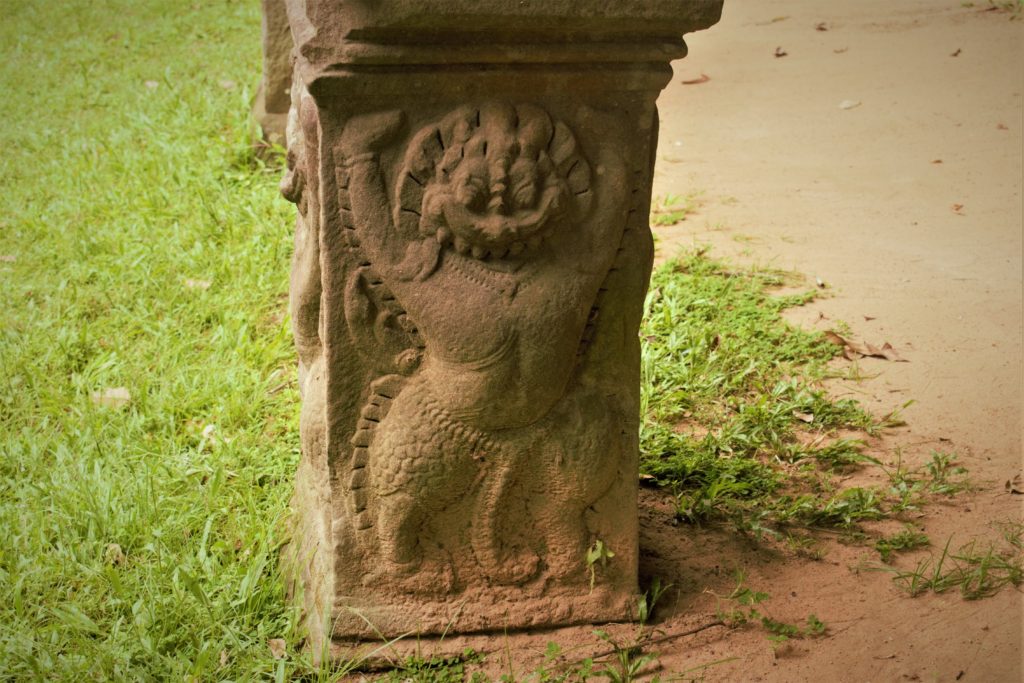
These pillars have carved images of Garuda who is half bird and half man character from Hindu mythology and there niches towards the top portion of the pillars. Most of these niches are empty now while a few have small statues of a meditating Buddha. The top of the pillars are ornamented with lotus flowers. On the eastern side, this pillar lined path leads from the landing stage at the edge of the Jayatataka Baray all the way to the eastern entrance of the Preah Khan temple complex.
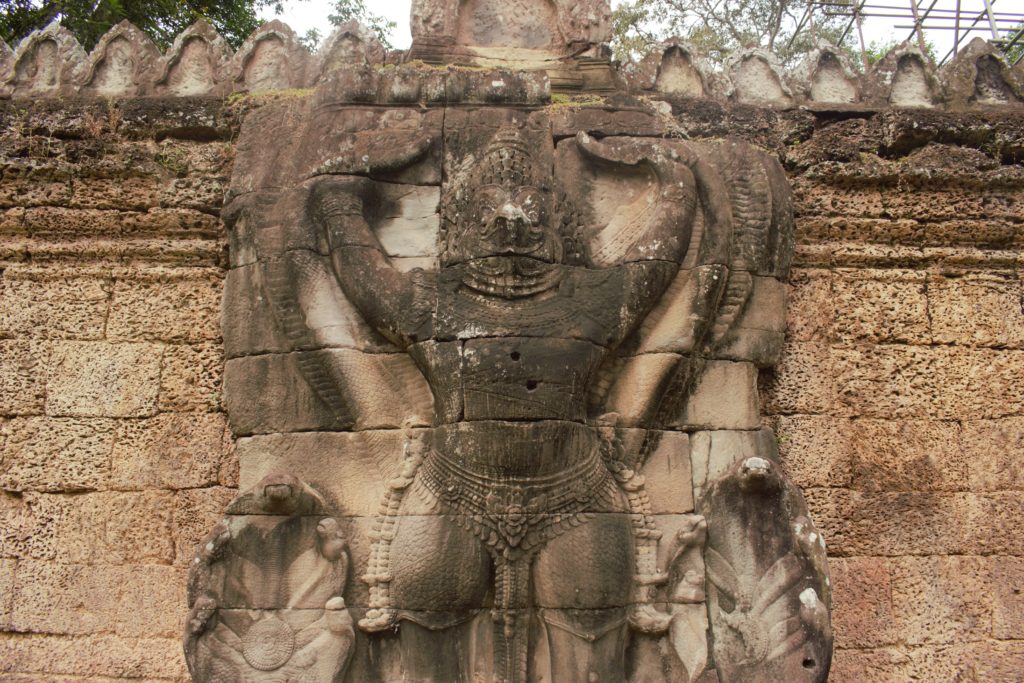
The Preah Khan temple sprawls over an area of 140 acres and is enclosed by an outer perimeter wall measuring 800 X 700 meters. There are 72 Garudas holding Nagas with their raised hands sculpted on the walls, These Garuda sculptures adorn the wall at intervals of about 50 meters.
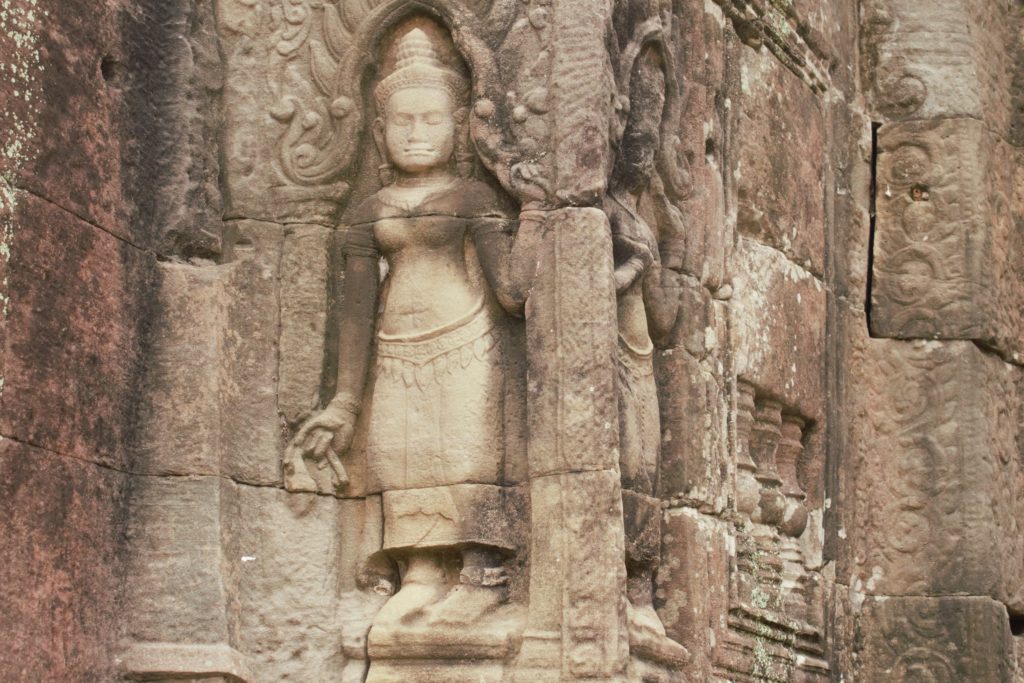
Bas reliefs of Devatas, and other celestial beings as well as false windows are known as Kudu, can be seen on the side of the wall as you enter from the Eastern Gate.
The main surviving structures are inside the first two enclosures. It is believed that the space between the fourth and third enclosures as well as that between the third and second enclosure was occupied by wooden structures of the city.
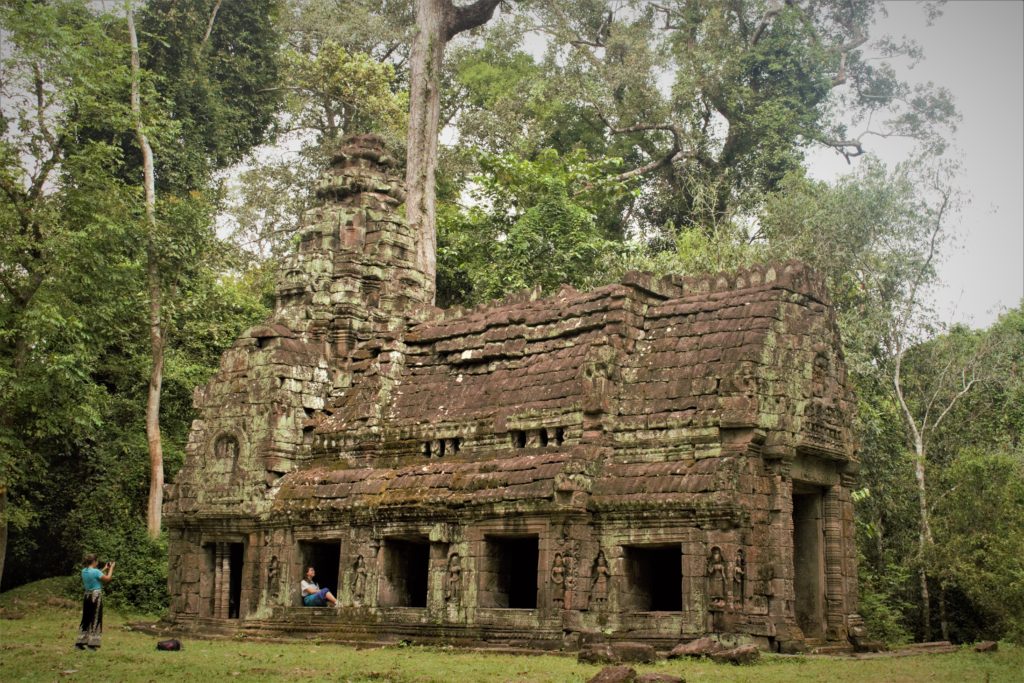
A building one comes across while moving towards the second enclosure is the House of Fire, a building with exquisitely decorated outer walls and windows.
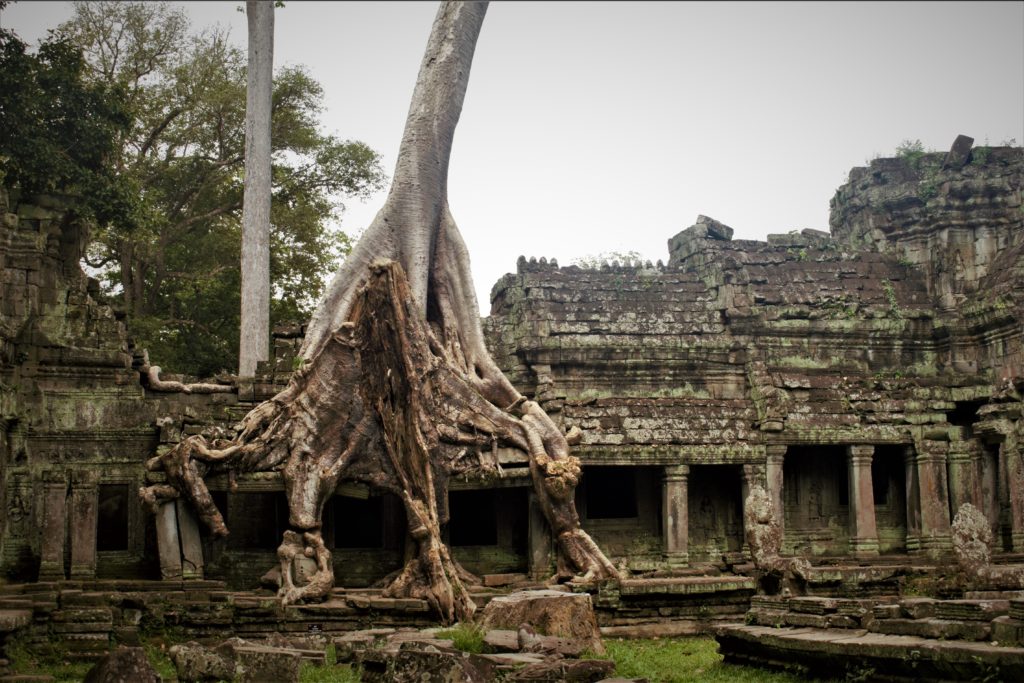
The second enclosure gives one a surreal feeling, huge trees cover the walls and give it a mysterious ambience.
On the east-west axis, lies a pillared porch with steps, flanked by a sculpted lion on one side, its pairing sculpture on the other side is missing.
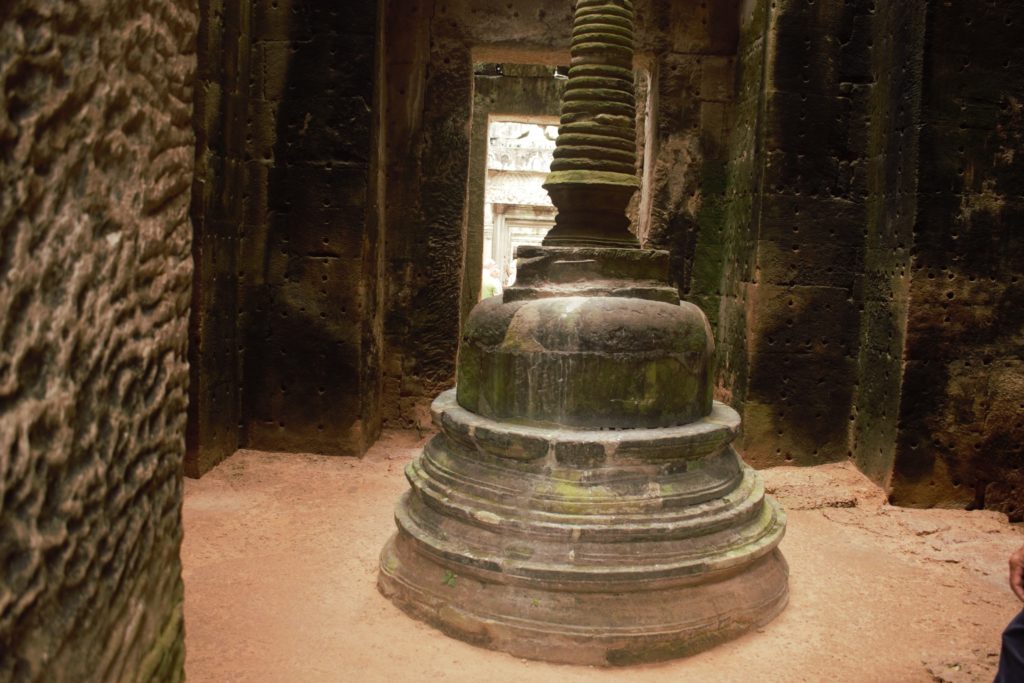
The porch leads towards the first enclosure and into the central portion of the temple, the sanctum where once stood the idol of Avalokiteshvara. The idol was replaced a few centuries later by the Stupa that stands today at the centre of the temple.
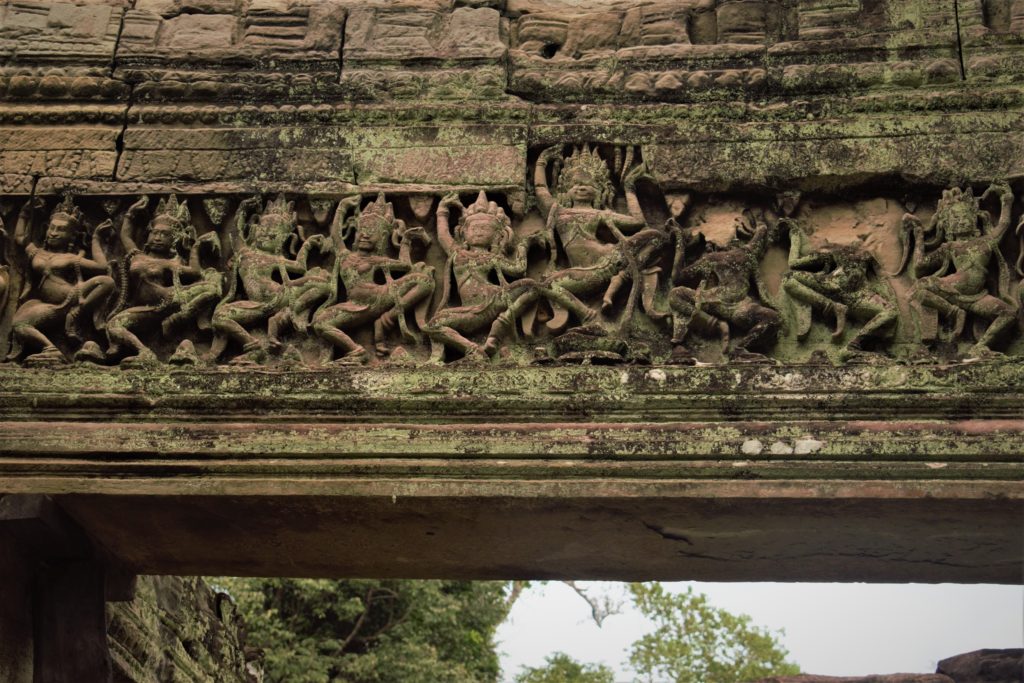
One of the notable features of the Preah Khan temple is the Hall of Dancers which is located on the central axis itself between the third and second enclosures.
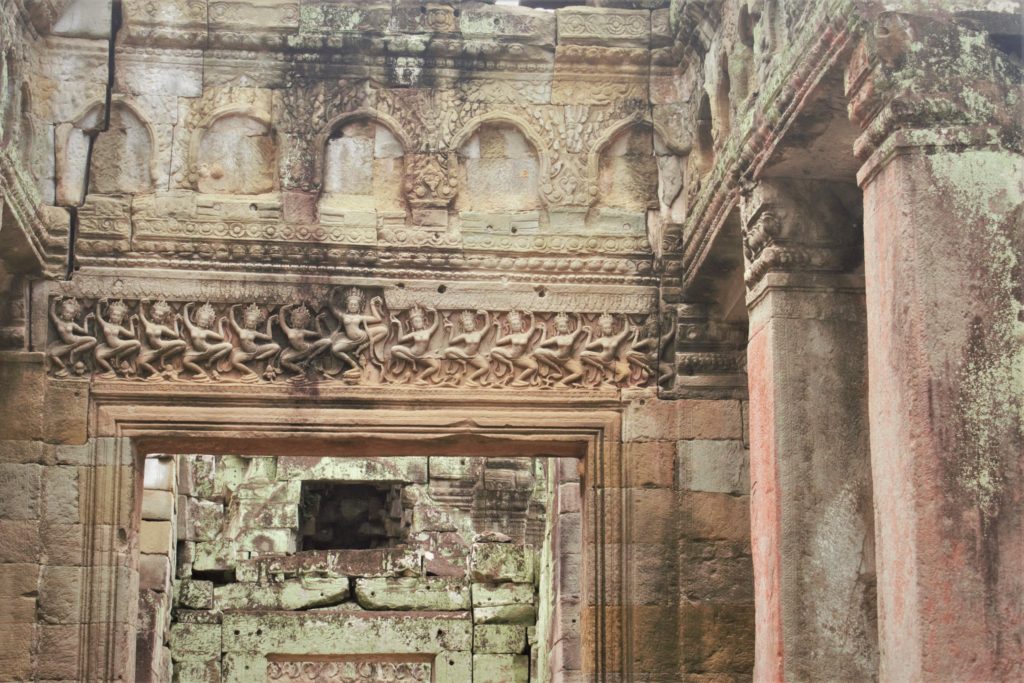
It gets its name from the beautiful carvings of dancing Apsaras that are clearly visible on the lintel of the door that leads further into the temple. Above the Dancing-Apsaras can be seen niches which once housed Buddha statues.
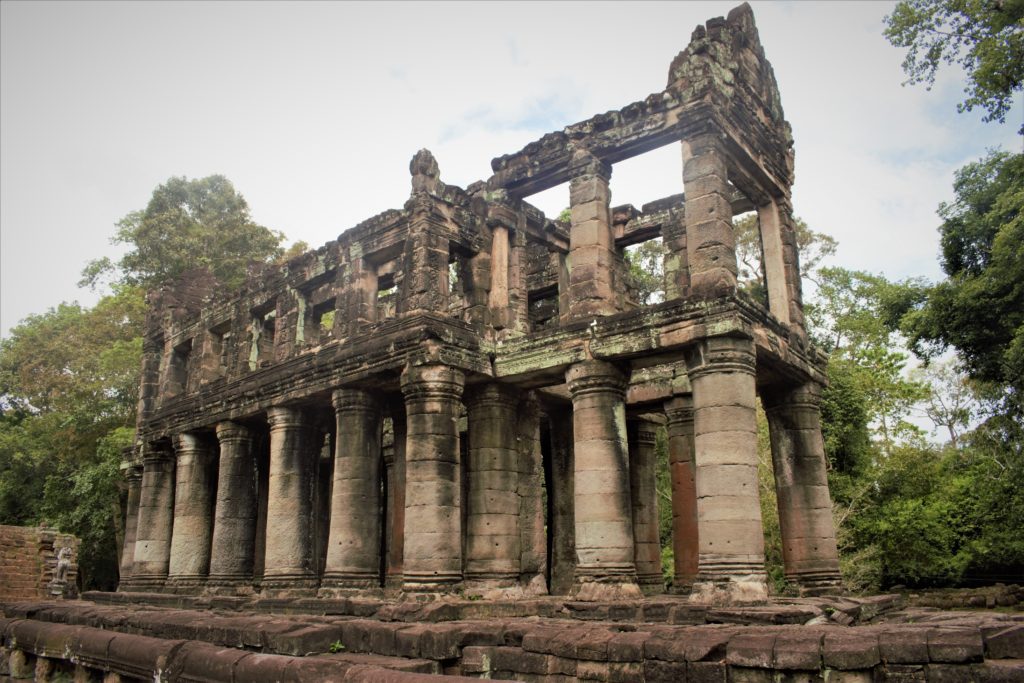
Another beautiful structure that reminds one of the Roman columns lies north of the Hall of Dancers. It is a two-storeyed structure whose purpose has not been established, though there is a theory that it may have been a granary. Whatever the purpose, the structure with its beautiful symmetry is a feast to the eyes.
Most of the structures between enclosures two and one are in ruins.
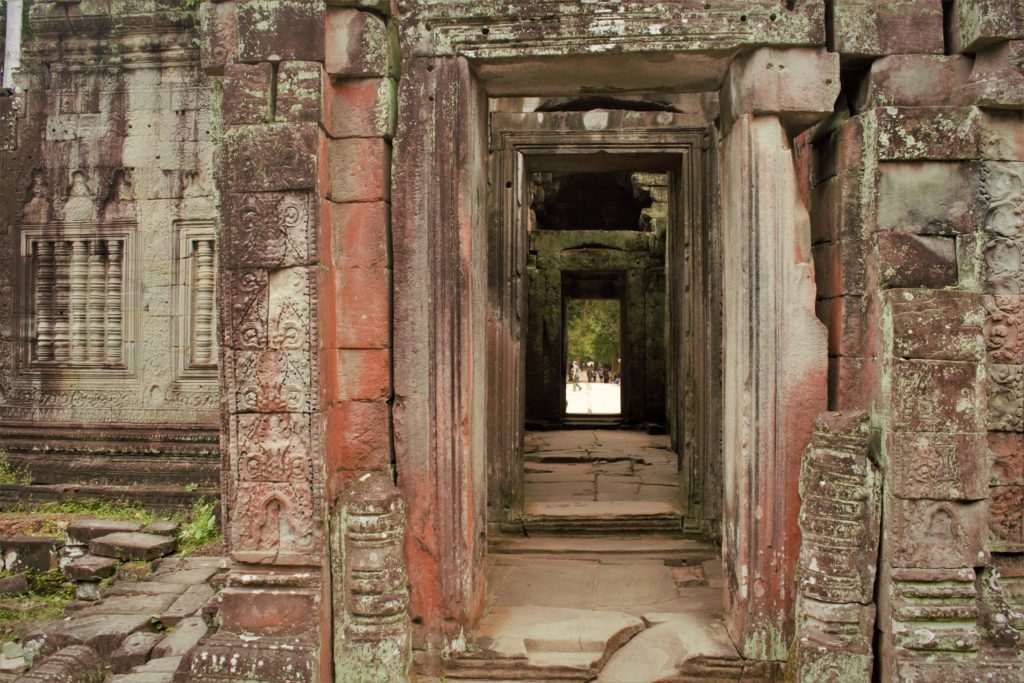
The long corridors that run on the coordinate axes meet at the central point where stands the Stupa.
Exquisite sculptures of Apsaras and other celestial beings, headless statues of Buddha, can be seen inside the first enclosure.
Best Time To Visit Siem Reap
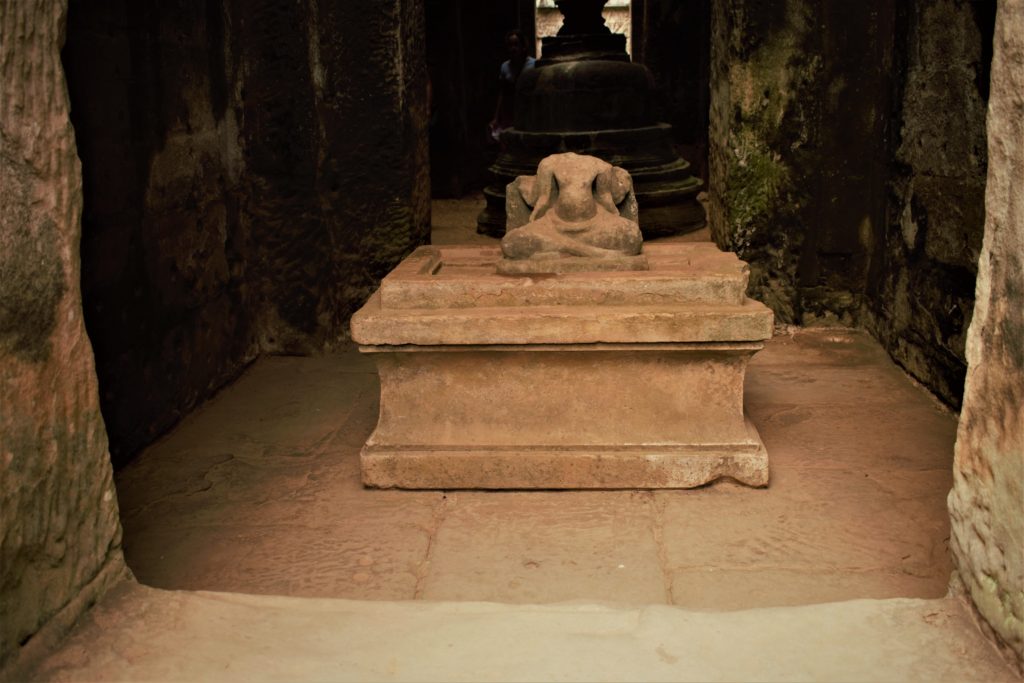
The best time to visit the temples of Siem Reap, including Preah Khan, Angkor Wat, and the others is during the winter months. The period from November to March is ideal for visiting the Siem reap temples, as the weather is cool and dry. Other months can be too hot or wet to explore the temples. The rider is that the best time would also be the time when the temples see maximum tourists, so one needs to be ready for the crowds.
How To Get To Preah Khan Temple
- The Preah Khan Temple is located within the Angkor Archaeological Park in Siem Reap, Cambodia
- The Preah Khan temple is at a distance of about 12.5 kilometres from downtown Siem Reap
- One can reach the temple by hiring a tuk-tuk or cab or a bicycle
- Siem Reap is one of the major tourist destinations of Cambodia and is served by the Siem Reap International Airport
- Major airlines fly in and out of Siem Reap
- Siem Reap is at a distance of about 318 kilometres from the Cambodian capital Phnom Penh
Does the architectural grandeur and history of the Preah Khan temple pique your interest? If you are looking for a trip to Siem Reap then, you can book flights right here. You can book a flight right here through TripAdvisor or Agoda or CheapAir or Cleartrip or Makemytrip or Priceline.
Where To Stay While Visiting Preah Khan
Siem Reap is where you will stay and launch your exploration of the Siem Reap temples including Preah Khan. There is a range of accommodation options to choose from in Siem Reap. Whether you are looking for a hostel, or budget hotel, or a 5-star hotel, Siem Reap has you covered. During our visit, we stayed at the Kingdom Angkor Hotel, a 4-star hotel that was really good and centrally located.
You can book your stay at the Kingdom Angkor Hotel, or any other hotel of your choice in Siem Reap right here
through TripAdvisor or Cleartrip or Agoda or Makemytrip or Priceline and get awesome deals and savings.
| Click here to book the best hotel/resort in Siem Reap |
|---|
Siem Reap Tours & Activities
Siem Reap is a fascinating destination and is a great place to visit with kids too. You can explore Siem Reap and its temples on your own by Tuk-Tuk or bicycle, but if you want a more comfortable way and want to opt for a conducted tour you can do so by booking Siem Reap attractions tours online or book some of the best and most recommended Siem Reap tours. You can now book tours in Siem Reap, as well as activities in Siem Reap right here.
| Click to know more about Best Attractions and Activities in Siem Reap. |
|---|
Other Important Temples To Visit In Siem Reap
- Angkor Wat
- Bayon
- Banteay Sreai
- Ta Prohm
- Phnom Bakheng
- Prasat Bakong
- Baksei Chamkrong
- Bapuhon Temple
- Banteay Samre
- Neak Pean
- Beng Mealea
Check out our post on the must see temples in Siem Reap for more information.
FAQ Preah Khan
When was Preah Khan built?
The Preah Khan temple was completed in 1191 AD.
Who built Preah Khan Temple?
The Preah Khan temple was built by the greatest of the Khmer rulers, King Jayavarman VII.
What religion does the Preah Khan Temple belong to?
The temple was primarily a Buddhist temple however within it there were shrines to many Hindu Gods and Goddesses.
Does the Preah Khan temple require a lot of walking?
Like most of the temples in Siem Reap, this temple too needs quite a bit of walking across its sprawling complex.
Does one need to do a lot of climbing while visiting the Preah Khan temple?
Unlike temples like Angkor Wat, the Preah Khan temple does not involve much climbing as it is built on flat land and follows a linear orientation.
We hope you liked our Preah Khan travel blog post and find the information useful as a Preah Khan temple guide. We also hope you liked the Preah Khan temple photos and the Preah Khan photos urge you to pack your bags to Siem Reap. However, do let us know if you have any questions about the temple or any other Siem Reap temple. Connect with us through the comments section below or through any of our social media channels.
Do You Love Traveling?
Do you want to know how to travel the world? We have put together a very useful travel resources page with best travel tips. Go check it out now.
Thanks for visiting our site Voyager – imvoyager.com and taking the time to read this post!
If you wish to collaborate/work with us then reach us at [email protected]
We’d love if you’d comment by sharing your thoughts on this post and share this post on social media and with your friends.
[shareaholic app=”share_buttons” id=”27413782″]
Follow our journey on our social media channels:
Facebook Twitter Instagram Pinterest YouTube
60+ Million Users Trust TripAdvisor With Their Travel Plans. Shouldn’t You?
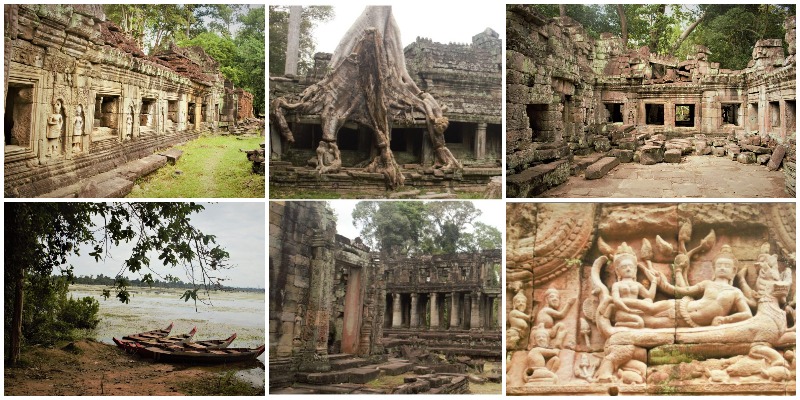
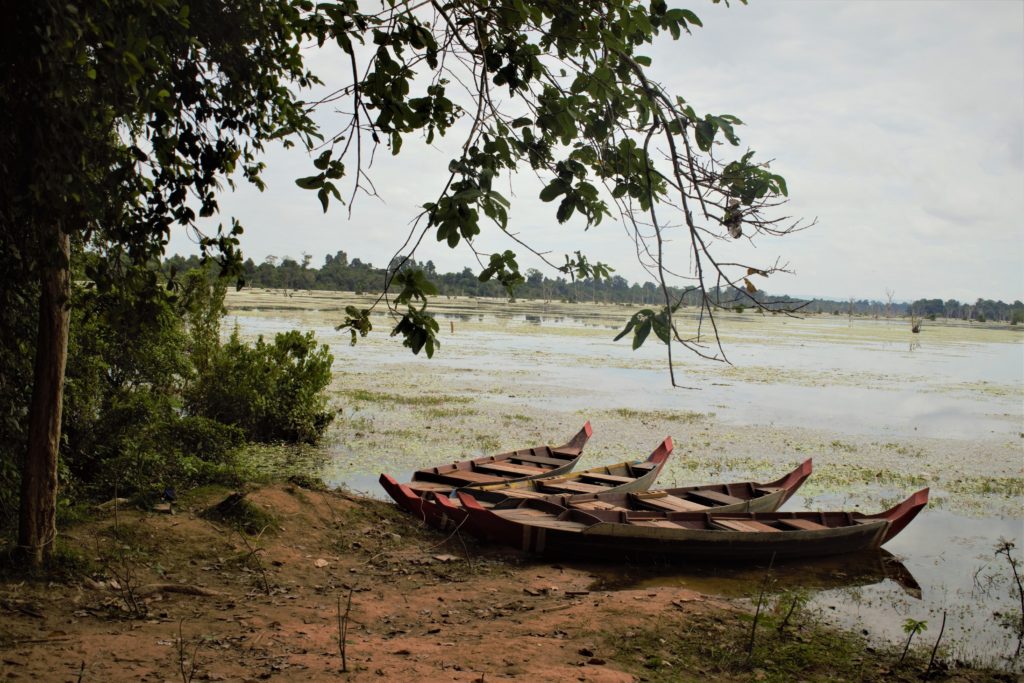
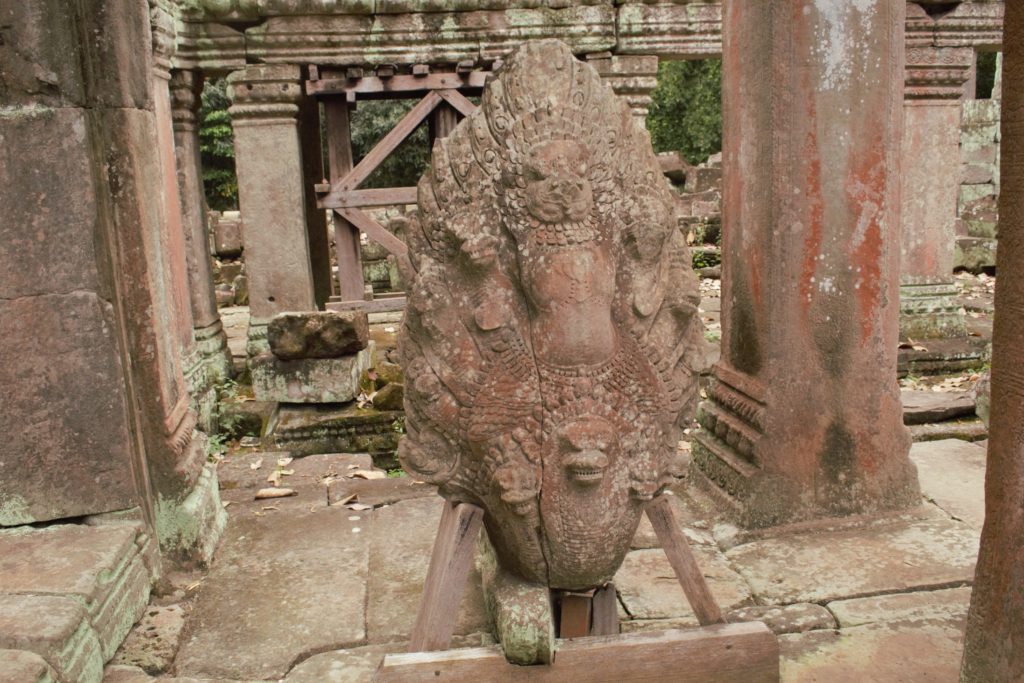
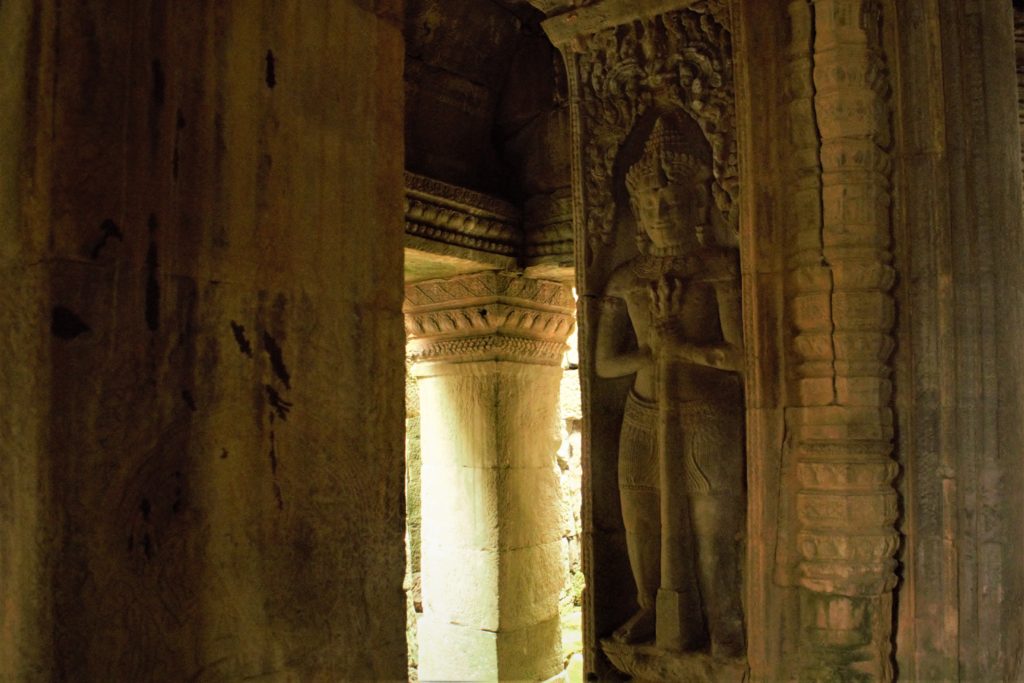
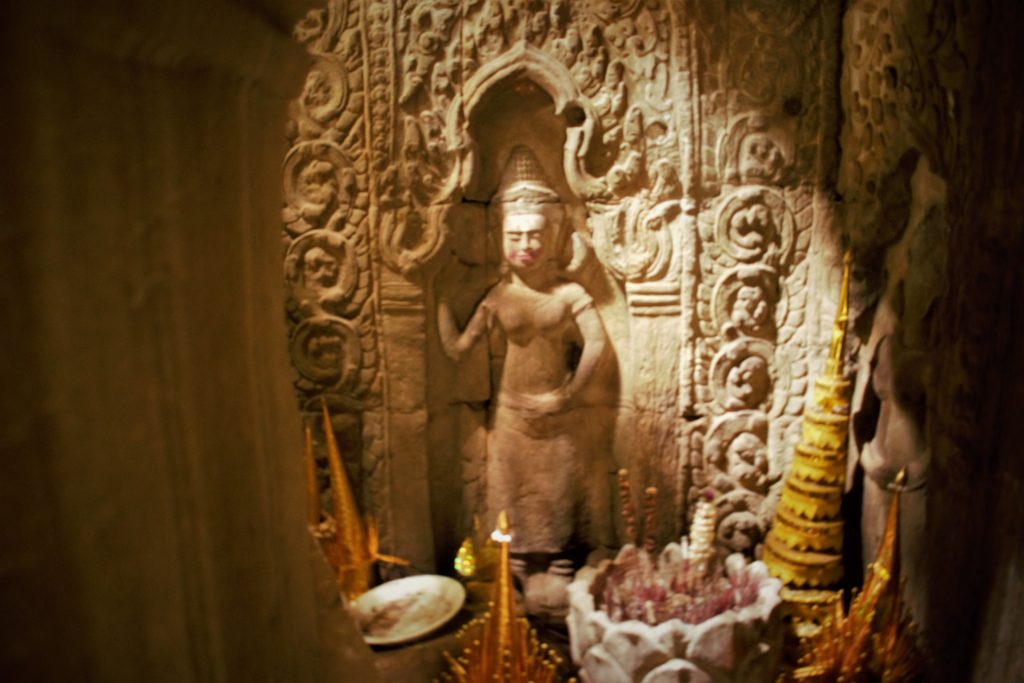
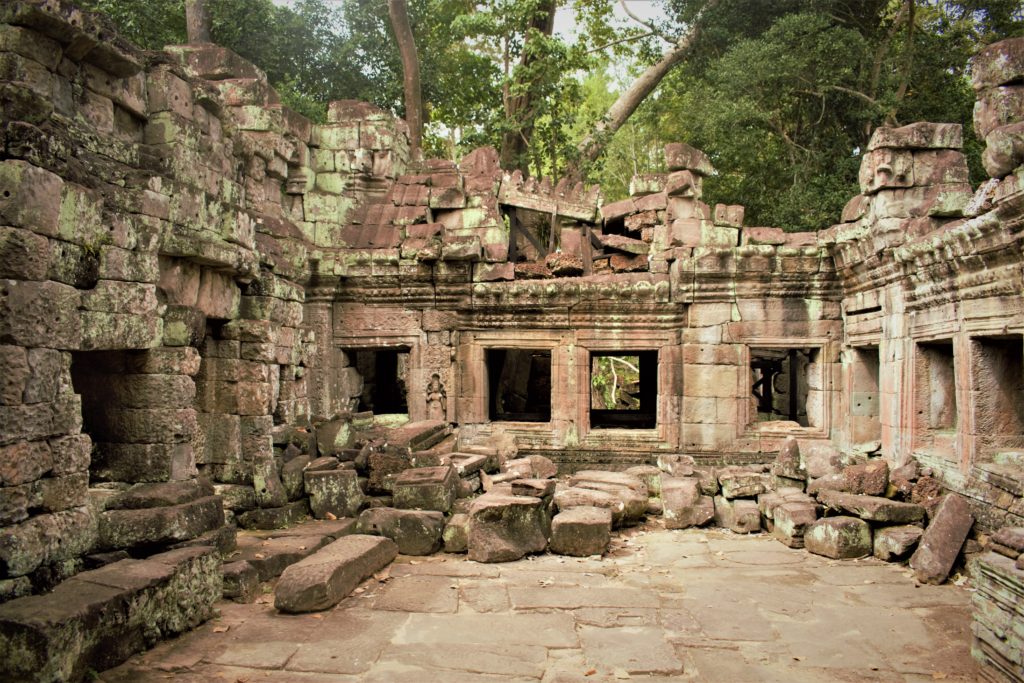
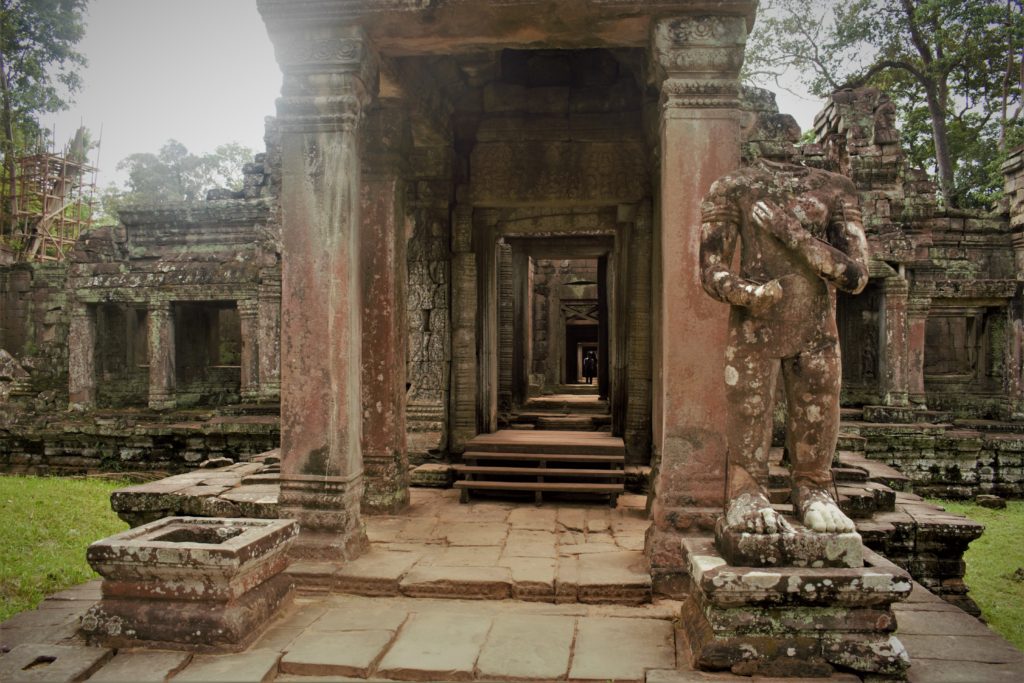
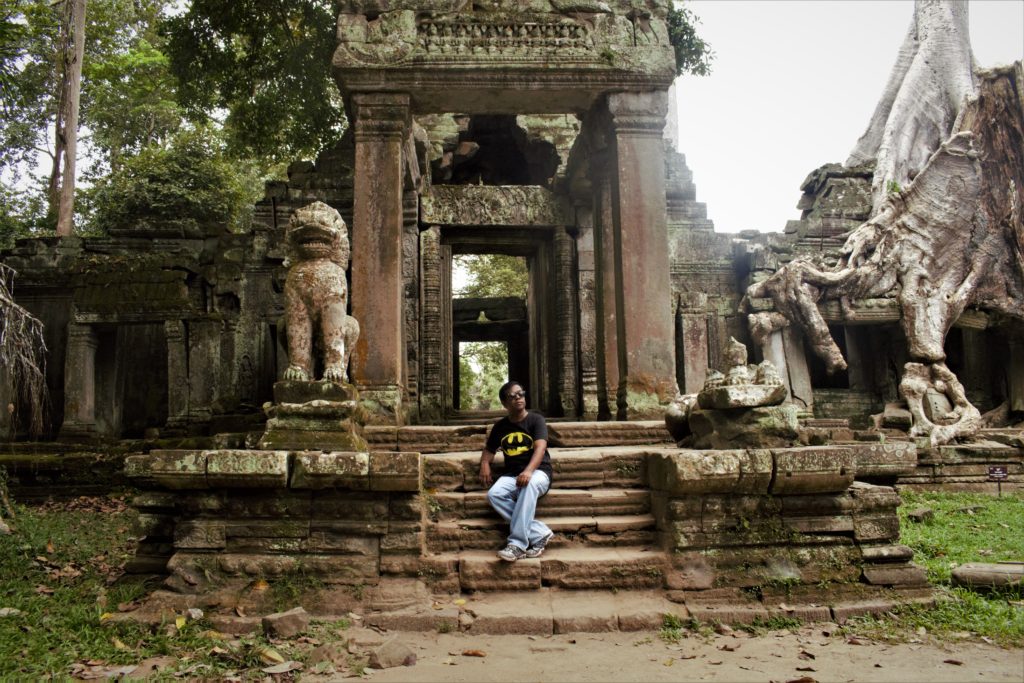

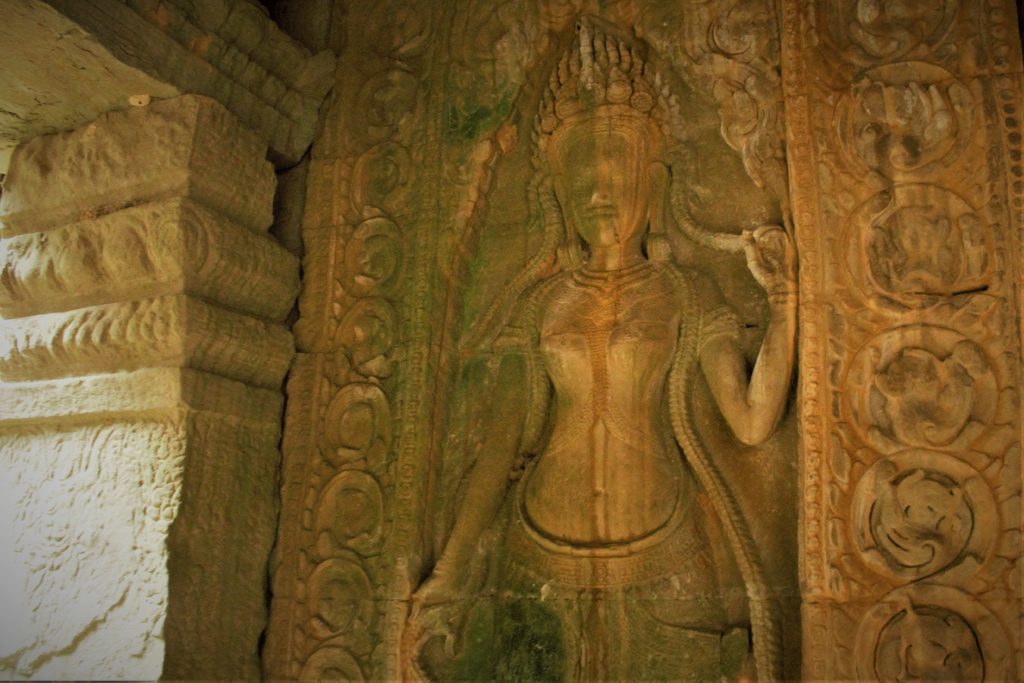


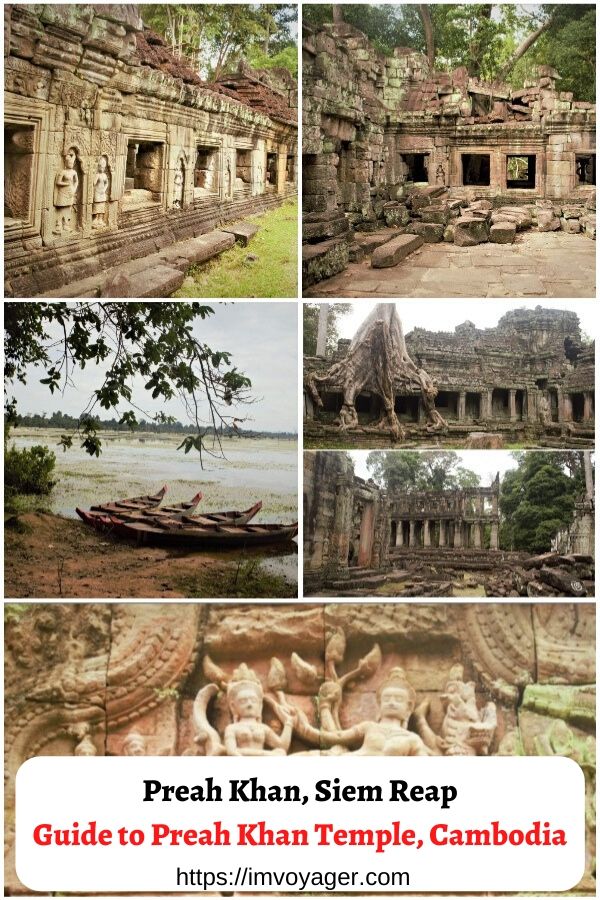

Wow, thank you for such an indepth explanation of the Preah Khan temple in Cambodia. I find it absolutely amazing that such incredible structures were built so long ago. Can you imagine the labour and planning that went into it? I’ve never visited a temple like this before, it must be wonderful to walk through and take in all that history in person.
Thank you for this virtual trip to one of the most worthy places in Cambodia I don’t think I will be ever able to visit. Your posts are awesome
The vivid description of this wonderful temple is making me so much tempted to go for a vacation to Cambodia and other places, specially at this time.
The place is looking super exotic and historic too. Would love to visit there once . thanks for highlighting the place .
The overall structure and architecture is so mesmerizing 😍
I loved the way you started the post with introducing the place where the guests arrive, it was surreal and I could visualize it too. I will surely love to visit this temple 😊
This place looks absolutely stunning. I love how exquisite the carvings and sculptures are. Sounds like you had a great visit and I appreciate all the in-depth information you provided.
Our plan was to visit Vietnam next year, which will likely not happen, and then do a separate trip to Cambodia and Laos a year or two later. So, all information you can provide about Siem Reap and other sites in these 3 countries is greatly appreciated.
Wowza! Yes, the architectural grandeur and history of the Preah Khan definitely piques my interest! What an amazing temple complex. It’s really cool that you were able to arrive by boat on the side where the King would receive guests.
I could spend days and days exploring here and admiring all those fantastic sculptures.
This is so cool, I would love exploring the Preah Khan Temple. I could spend hours admiring the sculptures and I love the look of the trees growing along the wall. Many of Cambodia’s temples are on my bucket list and I hope to make it there sometime in the near future
I was always intrigued by Angkor wat in Cambodia and didn’t know about this place. Thanks to you detailed your I feel like I’ve already visited there 🙂
The temple ruins in Cambodia and Peru are both stunning. I am always flabbergasted when someone tells me they went to Machu Picchu or Angkor and were disappointed. Either ruins are marvels of engineering even by today’s standards.
I know so little about Cambodia and only have Angor Wat on our Bucket List Project as it is the popular one by name. But I have to say that the Prasat Preah Khan temple looks absolutely amazing to me. I love the history of how it was most likely built on the battle field where they defeated the Chams! I love all the carvings and the structures overall. Of course, I love how nature has married with the temple to create amazing sights as well. But I like to imagine how the people used to walk around this massive structure that now hosts only visitors like us.